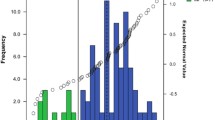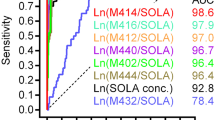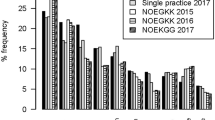Abstract
The emerging application of pharmacogenomics in the clinical trial setting requires careful comparison with more traditional phenotyping methodologies, particularly in the drug metabolism area where phenotyping is used extensively. The research objectives of this study were 1) to assess the utility of cytochrome P450 2D6 (CYP2D6) genotyping as an alternative to traditional phenotyping as a predictor of poor metabolizer status; 2) to identify issues for consideration when implementing CYP2D6 genotyping in clinical trials; and 3) to outline the advantages and disadvantages of CYP2D6 genotyping compared with phenotyping. DNA samples obtained from 558 previously phenotyped individuals were blindly genotyped at the CYP2D6 locus, and the genotype-phenotype correlation was then determined. The CYP2D6 genotyping methodology successfully predicted all but 1 of the 46 poor metabolizer subjects, and it was determined that this 1 individual had a novel (presumably inactive) mutation within the coding region. In addition, we identified 2 subjects with CYP2D6 genotypes indicative of poor metabolizers who had extensive metabolizer phenotypes as determined by dextromethorphan/dextrorphan ratios. This finding suggests that traditional phenotyping methods do not always offer 100% specificity. Our results suggest that CYP2D6 genotyping is a valid alternative to traditional phenotyping in a clinical trial setting, and in some cases may be better. We also discuss some of the issues and considerations related to the use of genotyping in clinical trials and medical practice.
Similar content being viewed by others
References
Kroemer HK, Eichelbaum M. Molecular basis and clinical consequences of genetic cytochrome P450 2D6 polymorphism. Life Sciences. 1995;56: 2285–2298.
Nebert DW. Polymorphisms in drug-metabolizing enzymes: what is their clinical relevance and why do they exist? Am J Hum Genet. 1997; 60: 265–271.
Sachse C, Brockmöller J, Bauer S, Roots I. Cytochrome P450 2D6 variants in a caucasian population: allele frequencies and phenotypic consequences. Am J Hum Genet. 1997; 60: 284–295.
West WL, Knight EM, Pradhan S, Hinds TS. Interpatient variability: genetic predisposition and other genetic factors. J Clin Pharmacol. 1997; 37: 635–648.
Lennard MS, Silas JH, Smith AJ, Tucker GT. Determination of debrisoquine and its 4-hydroxy metabolite in biological fluids by gas chromatography with flame ionization and nitrogen-selective detection. J Chromatogr. 1977; 133: 161–166..19
Chen ZR, Somogyi AA, Bochner F. Simultaneous determination of dextromethorphan three metabolites in plasma and urine using high-performance liquid chromatography with application to their disposition in man. Ther Drug Monit. 1990; 12: 97–104.
Köhler D, Härtter S, Fuchs K, Sieghart W, Hiemke C. CYP2D6 genotype and phenotyping by determination of dextromethorphan and metabolites in serum of healthy controls and of patients under psychotropic medication. Pharmacogenetics. 1997; 7: 453–461.
Özdemir V, Naranjo CA, Hermann N, Reed K, Sellers EM, Kalow W. Paroxetine potentiates the central nervous system side effects of perphenazine: contribution of cytochrome P450 2D6 inhibition in vivo. Clin Pharmacol Ther. 1997; 62: 334–347.
Gonzalez FJ, Skoda RC, Kimura S et al. Characterization of the common genetic defect in humans deficient in debrisoquine metabolism. Nature. 1988; 331: 442–446.
Gough AC, Miles JS, Spurr NK, et al. Identification of the primary gene defect at the cytochrome P450 CYP2D locus. Nature. 1990; 347: 772–775.
Saxena R, Shaw GL, Relling MV, et al. Identification of a new variant CYP2D6 allele with a single base deletion in exon 3 and its association with the poor metabolizer phenotype. Hum Mol Genet. 1994; 3: 923–926..20
Daly AK, Brockmöller J, Broly F, et al. Nomenclature for human CYP2D6 alleles. Pharmacogenetics. 1996; 6: 193–201.
Sachse C, Brockmöller J, Batter S, Reum T, Roots I. A rare insertion in exon 1 of CYP2D6 causes a frameshift and is associated with the poor metabolizer phenotype: CYP2D6*15. Pharmacogenetics. 1996; 6: 269–272.
Yokoi T, Kosaka Y, Chida M et al. A new CYP2D6 allele with a nine base insertion in exon 9 in a Japanese population associated with poor metabolizer phenotype. Pharmacogenetics. 1996; 6: 395–401.
Linder MW, Prough RA, Valdes R Jr. Pharmacogenetics: a laboratory tool for optimizing therapeutic efficiency. Clin Chem. 1997; 43: 254–266.
Lovlie R, Daly AK, Idle JR, Steen VM. Characterization of the 16+9 kb and 30+9 kb CYP2D6 XbaI haplotypes. Pharmacogenetics. 1997; 7: 149–152.
Marez D, Legrand M, Sabbagh N, et al. Polymorphism of the cytochrome P450 CYP2D6 gene in a European population: characterization of 48 mutations and 53 alleles, their frequencies and evolution. Pharmacogenetics. 1997; 7: 193–202..21
Oscarson M, Hidestrand M, Johansson I, Ingelman-Sundberg M. A combination of mutations in the CYP2D6*17 (CYP2D6Z) allele causes alterations in enzyme function. Mol Pharmacol. 1997; 52: 1034–1040.
Daly AK, Fairbrother KS, Andreassen OA, London SJ, Idle JR, Steen VM. Characterization and PCR-based detection of two different hybrid CYP2D7P/CYP2D6 alleles associated with the poor metabolizer phenotype. Pharmacogenetics. 1996; 6: 319–328.
Chen S, Chou W-H, Blouin RA, et al. The cytochrome P450 2D6 (CYP2D6) enzyme polymorphism: screening costs and influence on clinical outcomes in psychiatry. Clin Pharm Ther. 1996; 60: 522–534.
Madsen H, Hansen TS, Brøsen K. Imipramine metabolism in relation to the sparteine oxidation polymorphism a family study. Pharmacogenetics. 1996; 6: 513–519.
Griese E-U, Zanger UM, Brudermanns U, et al. Assessment of the predictive power of genotypes for the catalytic function of CYP2D6 in a German population. Pharmacogenetics. 1998; 8: 15–26.
Sachse C, Brockmöller J, Hildebrand M, Müller K, Roots I. Correctness of prediction of the CYP2D6 phenotype confirmed by genotyping 47 intermediate and poor metabolizers of debrisoquine. Pharmacogenetics. 1998; 8: 181–185.
Brockmöller J, Kirchheiner J, Meisel C, Roots I. Pharmacogenetic diagnostics of cytochrome P450 polymorphisms in clinical drug development and in drug treatment. Pharmacogenomics. In press.
Johansson I, Lundqvist E, Dahl M-L, Ingelman-Sundberg M. PCR-based genotyping for duplicated and deleted CYP2D6 genes. Pharmacogenetics. 1996; 6: 351–355.
Schmid B, Bircher J, Preisig R, Küpfer A. Polymorphic dextromethorphan metabolism: co-segregation of oxidative O-methylation with debrisoquine hydroxylation. Clin Pharmacol Ther. 1985; 38: 618–624.
Johansson I, Oscarson M, Yue Q-Y, Bertilsson L, Sjöqvist F, Ingelman-Sundberg M. Genetic analysis of the Chinese cytochrome P4502D locus: characterization of variantCYP2D6 genes present in subjects with diminished capacity for debrisoquine hydroxylation. Mol Pharmacol. 1994; 46: 452–459.
Wang S-L, Lai M-D, Lai M-L, Huang J-d. R296C and other CYP2D6 mutations in Chinese. Pharmacogenetics 1995; 5: 385–388..23
Aynacioglu AS, Sachse C, Bozkurt A, et al. Low frequency of defective alleles of cytochrome P450 enzymes 2C19 and 2D6 in Turkish population. Clin Pharmacol Ther. 1999; 66: 185–192.
Kashuba ADM, Nafziger AN, Keams GL, et al. Quantification of intraindividual variability and the influence of menstrual cycle phase on CYP2D6 activity as measured by dextromethorphan phenotyping. Pharmacogenetics. 1998; 8: 403–410.
Sambrook J, Fritsch EF, Maniatis T. Molecular Cloning: A Laboratory Manual. 2nd ed. Cold Spring Harbor. NY: Cold Spring Harbor Laboratory Press: 1974.
Steen VM, Andreassen OA, Daly AK, et al. Detection of the poor metabolizer-associated CYP2D6(D) gene deletion allele by long-PCR technology. Pharmacogenetics. 1995; 5: 215–223.
Douglas AM, Atchison BA, Somogyi AA, Drummer OH. Interpretation of a simple PCR analysis of CYP2D6(A) and CYP2D6(B) null alleles associated with the debrisoquine/sparteine genetic polymorphism. Pharmacogenetics. 1994; 4: 154–158..24
Author information
Authors and Affiliations
Corresponding author
Additional information
Published: October 29, 2000.
Rights and permissions
About this article
Cite this article
McElroy, S., Richmond, J., Lira, M. et al. CYP2D6 Genotyping as an alternative to phenotyping for determination of metabolic status in a clinical trial setting. AAPS PharmSci 2, 33 (2000). https://doi.org/10.1208/ps020433
Received:
Accepted:
Published:
DOI: https://doi.org/10.1208/ps020433




